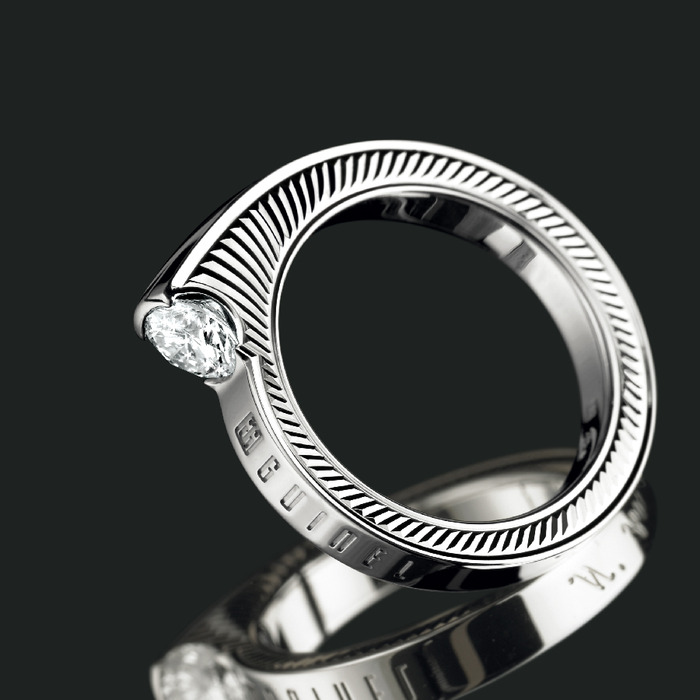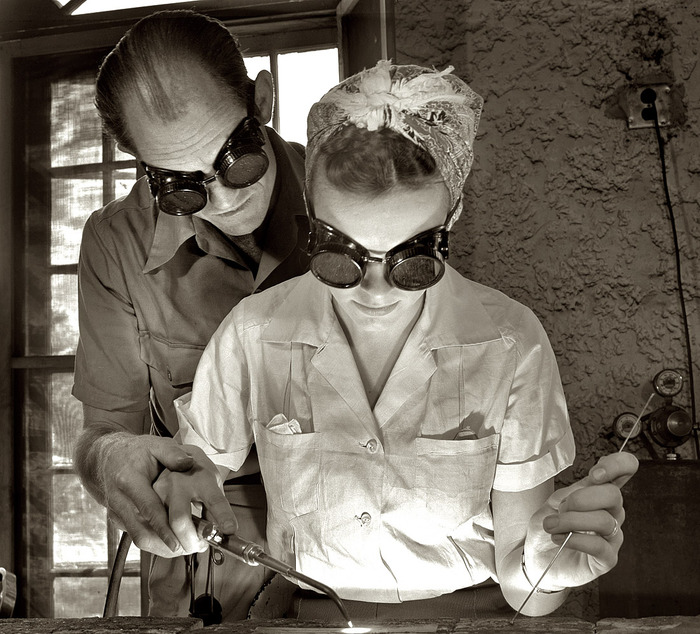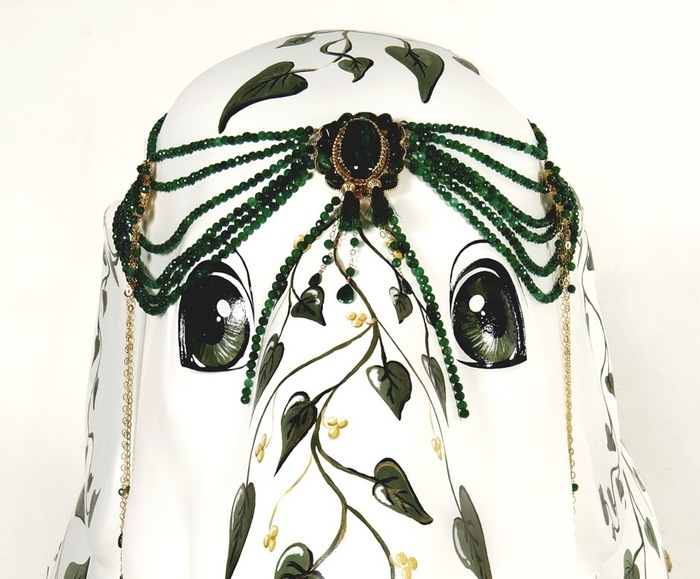May 2010 Archives
Patrizzi and Company is one of the larger watch-centric auction houses, and a pair of pieces that they've sold so far this month caught my eye.
From their May 7th auction comes a rare, Japanese-made coach clock (a coach clock is the term for something in the basic form of a pocket-watch, but much larger, in this case 92mm in diameter). Japanese clocks of this period have an unusual dial arrangement, with only 6 indications on the face. This is based on a Chinese method of telling time where the day was divided into 12 parts, six equal segments covered sunrise to sunset, six more equal part, of perhaps different length, covered sunset to sunrise. Due to the seasonal change in the length of daylight, the hour indicators need to be adjustable, and they are on this piece. The Japanese consider the number 9 to be mystical, so the telling of time starts with nine. The hours are indicated by the ones-place of the product of the actual hour (1,2,3...6) with 9, so:
Midnight (Rat) and midday (Horse) 1 × 9 = 09 9
2nd hour (Sheep) and 7th hour (Ox) 2 × 9 = 18 8
3rd hour (Monkey) and 8th hour (Tiger) 3 × 9 = 27 7
4th hour (Cock) and 9th hour (Hare) 4 × 9 = 36 6
5th hour (Dog) and 10th hour (Dragon) 5 × 9 = 45 5
6th hour (Boar) and 11th hour (Snake) 6 × 9 = 54 4
To confuse the issue even more, however, this watch has a "12" at the top position, as it would be in a European watch, not the expected "9"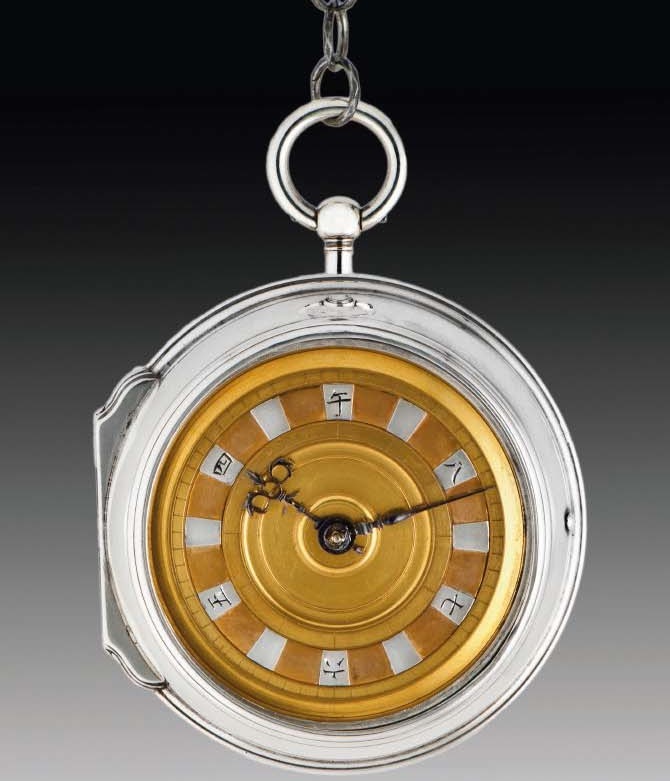
(source)
From June 15th's auction comes a mid-17th Century cruciform pocket/pendent watch. Perhaps made for a Knight of the Grand Cross of Malta as there are Maltese Crosses at the top, where the bail joins, and the bottom of the case. This piece predates the invention of the hairspring, and relies on a Stackfreed, a sort of variable friction device, to regulate it. The case was cut and faceted from a single piece of rock-crystal. Unusually it features a 5-wheel train (there are 4 wheels between the escapement and the barrel, which is added to the count), when most watches of this period used fewer wheels due to primitive mainsprings.
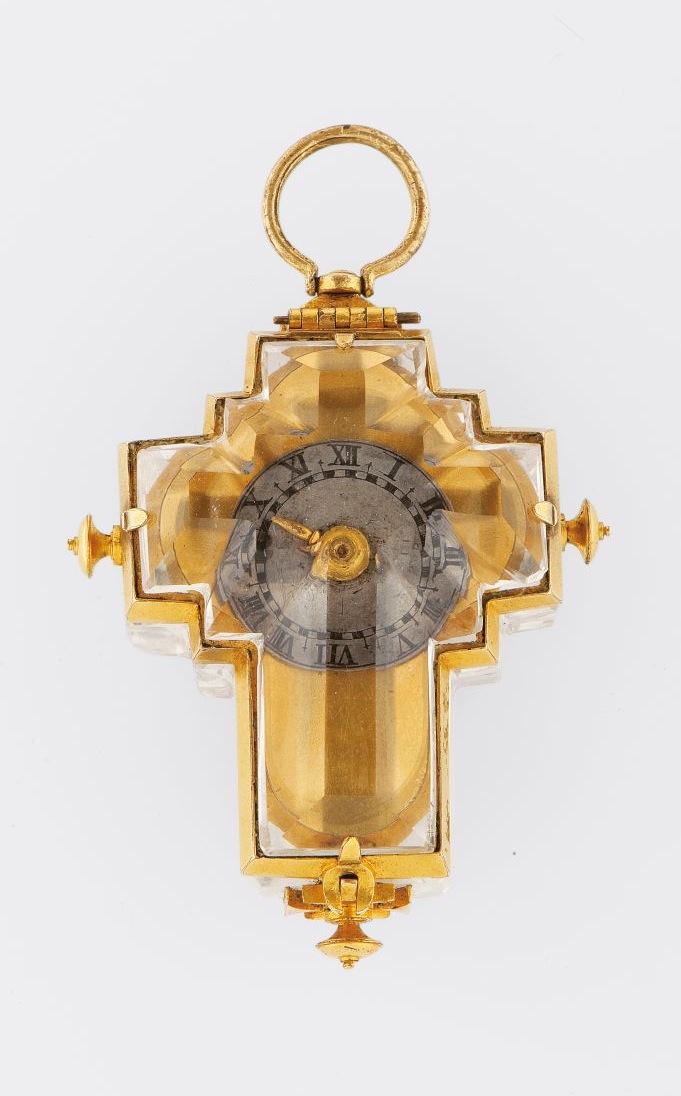
Back view, the curl of steel from the right arm of the cross to the left is the Stackfreed
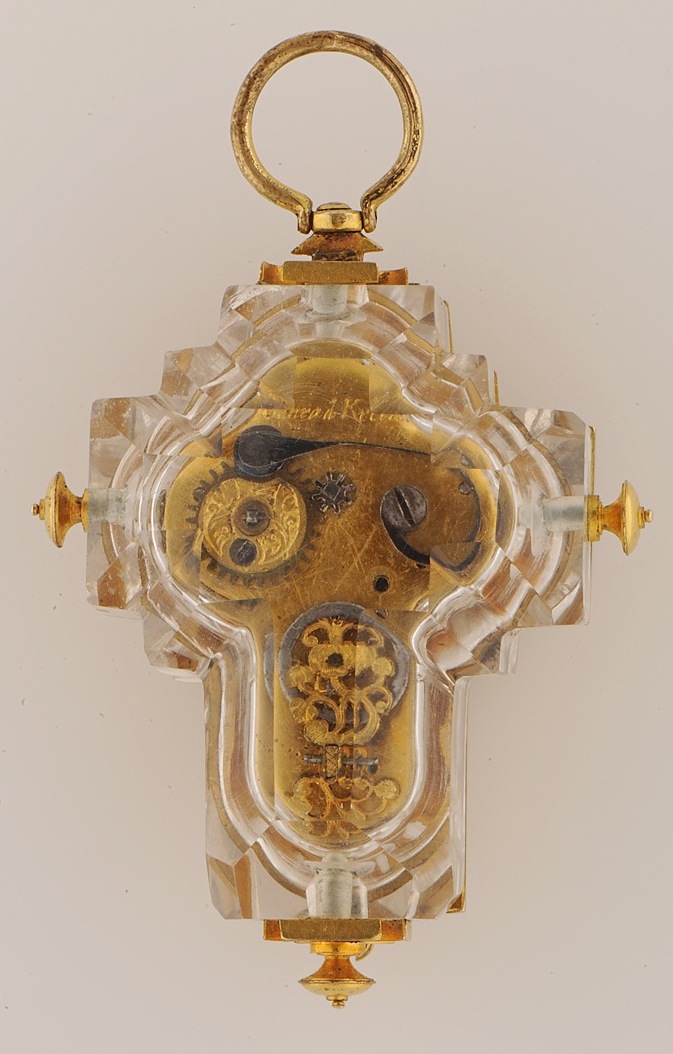
Side view, at the right side the horizontal wheel from the Verge escapement is visable.

(source)
A
As a technique Guilloché has been mostly relegated to the realm of watch dials, with Allen Elishewitz's knives as the notable exception. It is the sort of technique that was born during the enlightenment, wherein the number, grouping and depth of cams and bumps on a series of wheels can create fantastic patterns engraved into metal.
A late 18th Century rose engine for doing guilloche work, this engraving comes from Denis Diderot's Encyclopedia.
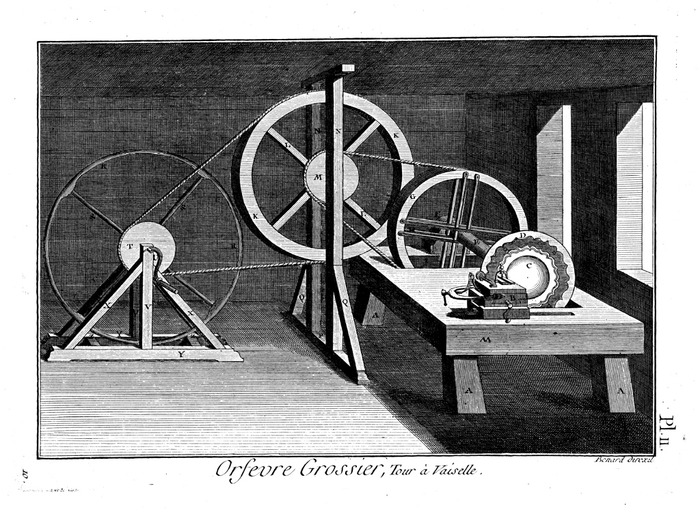 (From)
(From)
Louis the 16th practiced as a hobby using this lathe, now in the Conservatoire des Arts et Metiers, in Paris. In this picture, the large steel wheels at center are th cams that determine the pattern; the piece to be cut would be attached to the brass disk at the right of the machine, and the machine would be turned, by hand, from the left via crank
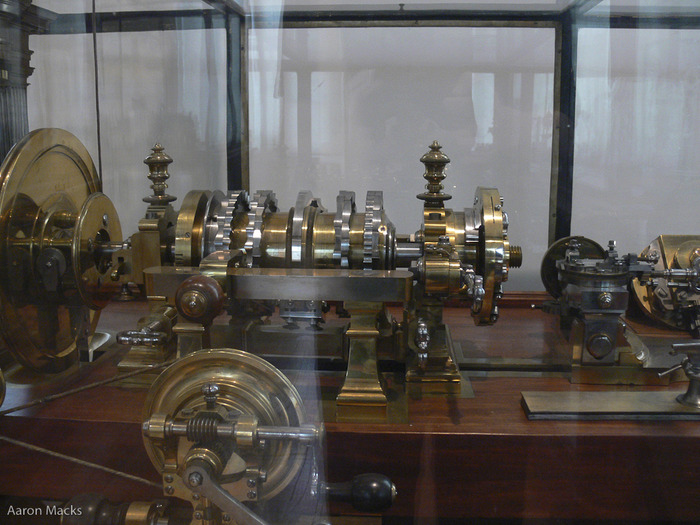 (Picture is mine, 2008)
(Picture is mine, 2008)
In recent years there have been some examples of the technique in jewelry, but mostly in watch companies trying to expand their ranges. Guinel, on the other hand, has no history in the watch industry, so their designs can be free of that baggage.
For a first piece they have a 18k gold pendent, with a band of diamonds. The engraved pattern is a rather simple one, a series of circles, each offset from the previous one, progressing around a circle. If these were done evenly, it would create a barley-corn pattern, but skipping every few causes a more interesting pattern to emerge
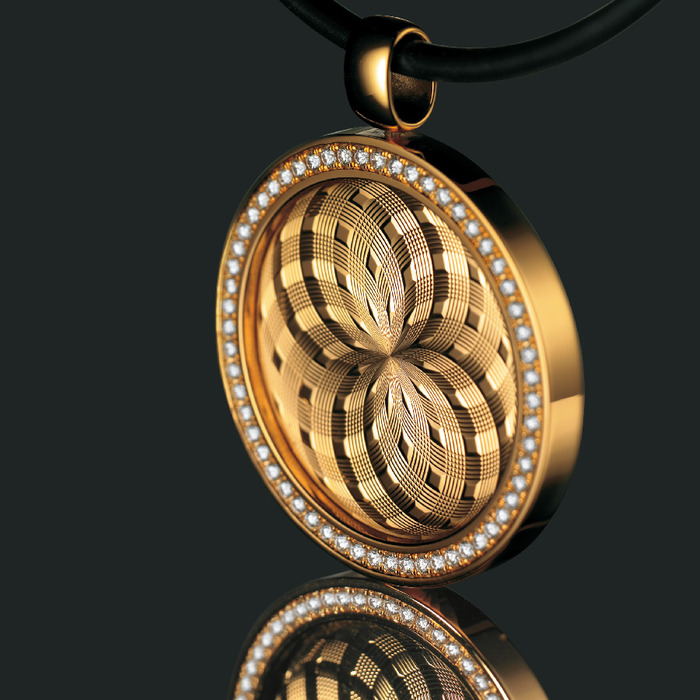
This next piece is from their Solitaire collection, a single diamond set in white gold. The side of the ring is decorated with a pattern called Soleil courbe (curve of the sun). I quite like the design, but could do without the brand name written in large letters around the outisde of the ring.
Finally a piece with the engraving in mother of pearl, one of the most difficult materials to engrave due to irregularities in the layers and overall brittleness. This piece is from their Helicie collection.
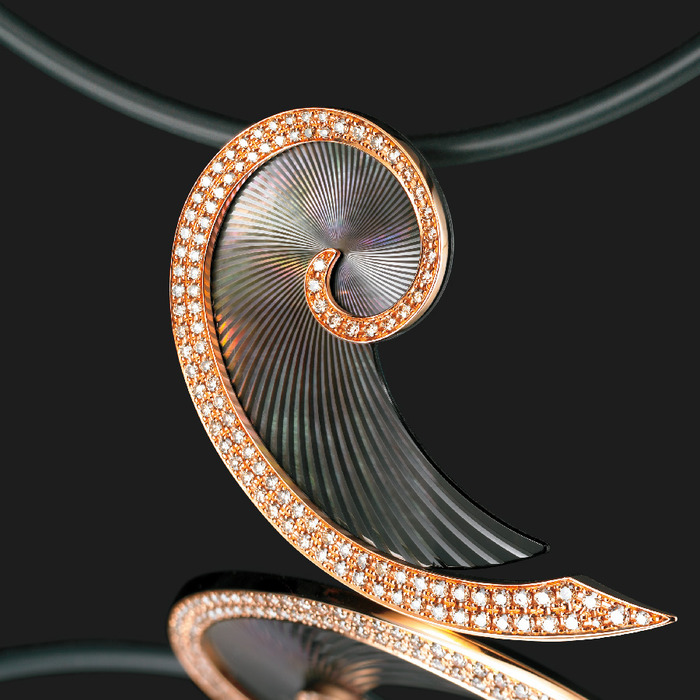
Jewelry photos from Paris Joaillerie
A
 A butterfly perches precariously on the head of a Brazillian Caiman, photo by Stefan Huwiler/Solent/Visual Press Agency (via)
A butterfly perches precariously on the head of a Brazillian Caiman, photo by Stefan Huwiler/Solent/Visual Press Agency (via)
A
First a necklace by Lanvin (annoyingly loud website), in bronze with coral accents, from a photo spread originally from Vogue Mexico, May 2010.

(source)
Second a necklace by Fred Leighton about which I have no details, from V Magazine, issue 65. (Note: the weird pink at her mouth is a collapsing bubble-gum bubble. It took me a while to figure that one out)

(source)
This pair joins an Adler necklace, the Amazonie, referenced earlier.
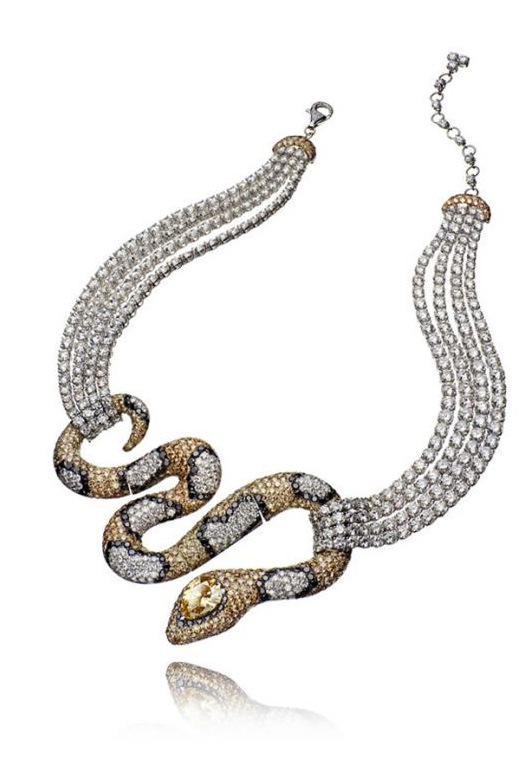
A
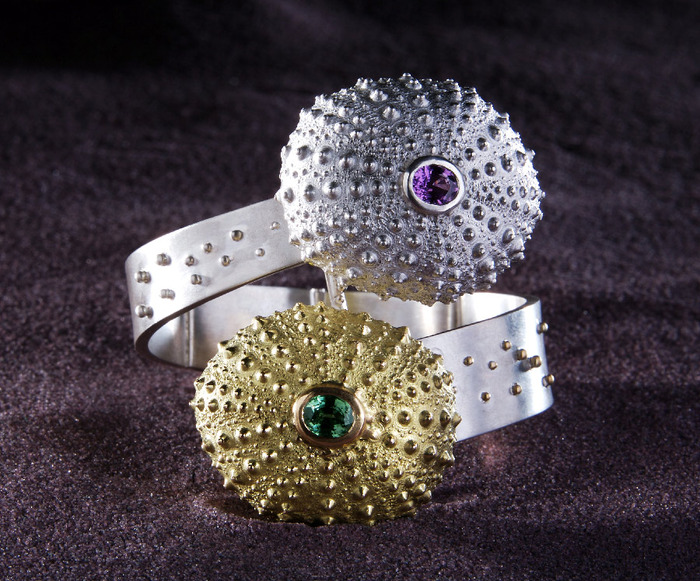
To balance that is a cactus broach by Umane, which has the unusual distinction of being, perhaps, the first use of a briolette cut stone that I didn't dislike
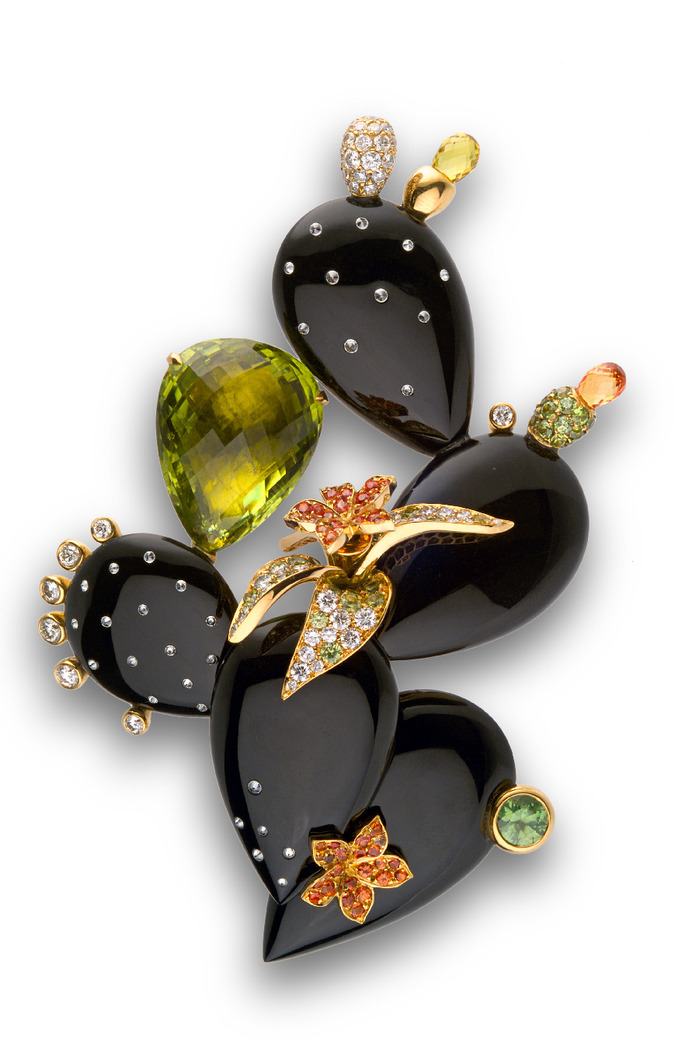
(source)
A
Clearly designed before mid-2008, the Celsius X VI II LeDix (the brand is Celsius X VI II, the spaces apparently matter) is a mechanical watch movement, complete with tourbillon, hacked into an, admittedly really well made, cell phone. Taking a page from Art Deco purse watches(like the Movado Ermeto), it is wound for about 3 hours of additional timekeeping each time you open and close the phone. The following photos are from their product site, which has a promo video that's unsurprisingly pompous, if a bit amusing.
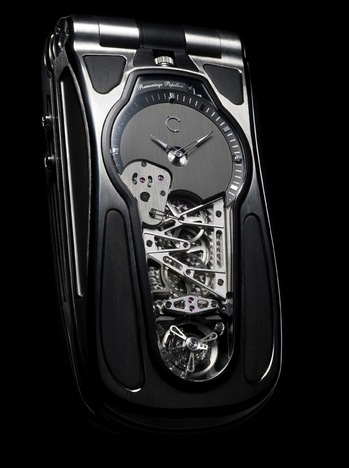 | 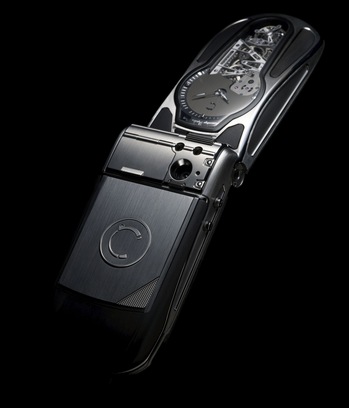 |
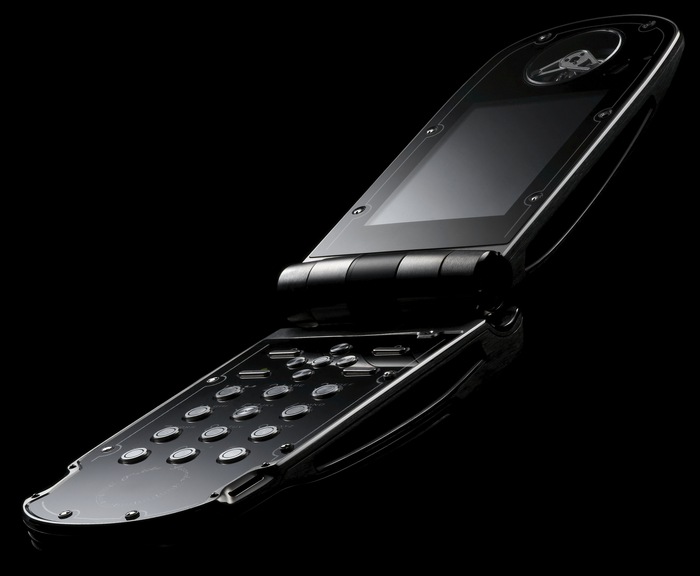 The case is polished Titanium with ebony inlays, or Carbon Fibre if you'd prefer. There are no plasticy bits visable, all the doors and flaps and such are covered with little metal doors. At least they're consistantly absurd. Of course you don't want to scratch it so it even comes with a holster, though answering the phone at the wrong time might get you shot
The case is polished Titanium with ebony inlays, or Carbon Fibre if you'd prefer. There are no plasticy bits visable, all the doors and flaps and such are covered with little metal doors. At least they're consistantly absurd. Of course you don't want to scratch it so it even comes with a holster, though answering the phone at the wrong time might get you shot

(source)
A
- I believe I've mentioned one or two of these before, but Charles Halton has put together a full M.A. in Biblical Studies' worth of free online classes
- Alan Lenzi has discontinued Feeling Finite, just as I was starting to understand prayers to Sin
- There has been a large amount of noise in the not"quite":http://www.thesun.co.uk/sol/homepage/news/2949640/Noahs-Ark-found-in-Turkey.html-reputable-press about the supposed discovery of Noah's Ark. Dr Randall Price, one of the archaeologists involved, and a firm believer (he runs World of the Bible ) has released this statement admitting that it is a hoax.
A
An ad for a Manila gay bar...

(source)
A
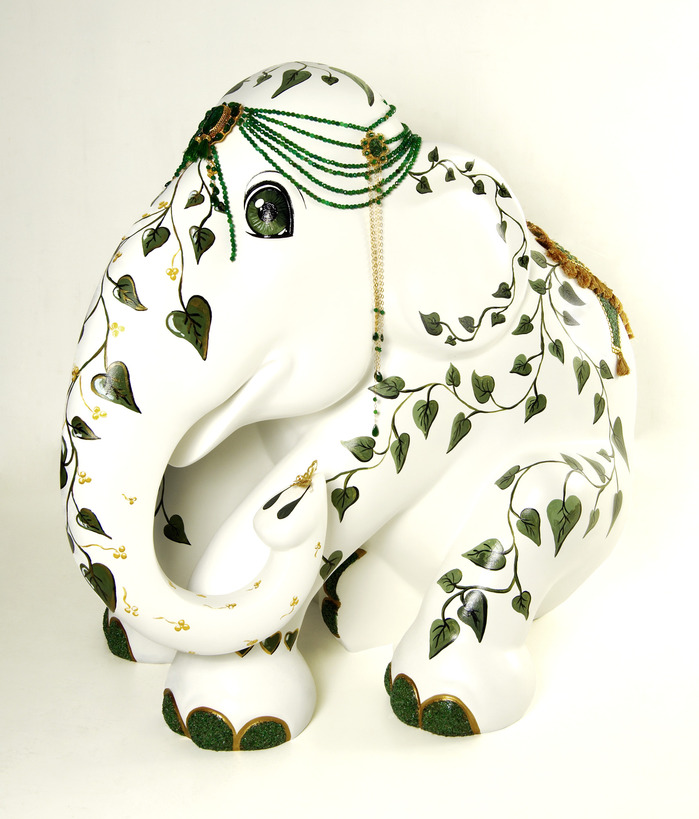
One is a ring set with a Zambian stone by Sevan Biçikçi (previously mentioned)
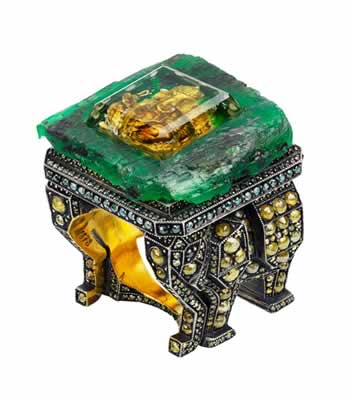
(source)
I am still hunting down pictures of the other pieces...
A



